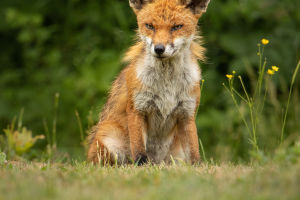Dragonflies are some of the most fascinating and beautiful insects in the world.
These ancient insects have been around for over 300 million years, predating even the dinosaurs. They are known for their unique and beautiful appearance, with long, slender bodies and large, transparent wings. In this article, we will take a closer look at the dragonfly, exploring its anatomy, behavior, and ecological role.
Dragonflies have a very distinctive body shape, with a long, slender abdomen, a thorax, and a head. The abdomen is made up of 10 segments, and the last few segments are often brightly colored and patterned, making them easy to spot. The thorax is the middle segment, and it is where the dragonfly's four wings and six legs are attached. The head is located at the front of the body, and it is where the dragonfly's eyes, mouthparts, and antennae are located.
One of the most distinctive features of a dragonfly is its wings. Dragonfly wings are large and transparent, and they are held out to the side of the body when the insect is at rest. Unlike most other insects, which have two pairs of wings, dragonflies have four wings. The front wings are larger than the back wings, and they are used for forward movement and steering. The back wings are smaller and are used for stability and balance.
Dragonflies are fascinating creatures with a complex range of behaviors. They are highly active insects and are often seen flying around ponds and other bodies of water. They are also capable of hovering in place, which is an impressive feat of aerodynamics.
Dragonflies are predators, and they are known for their impressive hunting skills. They have large, powerful jaws that they use to catch and eat other insects, such as mosquitoes and flies. They are also known to eat small fish and tadpoles. Dragonflies are active during the day, and they are often seen hunting in groups.
Dragonflies are also known for their mating behavior, which is often quite elaborate. The male will often defend a territory and will use his brightly colored abdomen to attract a female. Once a female has been attracted, the pair will mate, with the male grasping the female's thorax with his legs.
Dragonflies are an important part of many ecosystems and play a crucial role in controlling the populations of other insects. As predators, they help to keep the populations of mosquitoes, flies, and other insects in check. This is particularly important in areas where mosquitoes are a major problem, as they are carriers of diseases such as malaria and dengue fever.
Dragonflies also play an important role in aquatic ecosystems. Their larvae are aquatic and live in the water for up to two years before emerging as adults. During this time, they feed on other aquatic insects and help to control their populations. They are also an important source of food for fish and other aquatic animals.
Dragonflies are also important indicators of environmental health. Because they are sensitive to changes in water quality and habitat degradation, their presence or absence can provide important information about the health of an ecosystem. Scientists use dragonflies as bioindicators to monitor the health of wetlands, rivers, and other bodies of water.
Dragonflies are fascinating insects with unique and beautiful appearances. They play an important role in many ecosystems and are essential for controlling the populations of other insects. Their behavior and ecology make them an important subject of study for scientists, and they are a valuable indicator of environmental health. Whether you are a scientist, a nature lover, or simply someone who appreciates the beauty of the natural world, the dragonfly is an insect that is sure to capture your attention and imagination.


